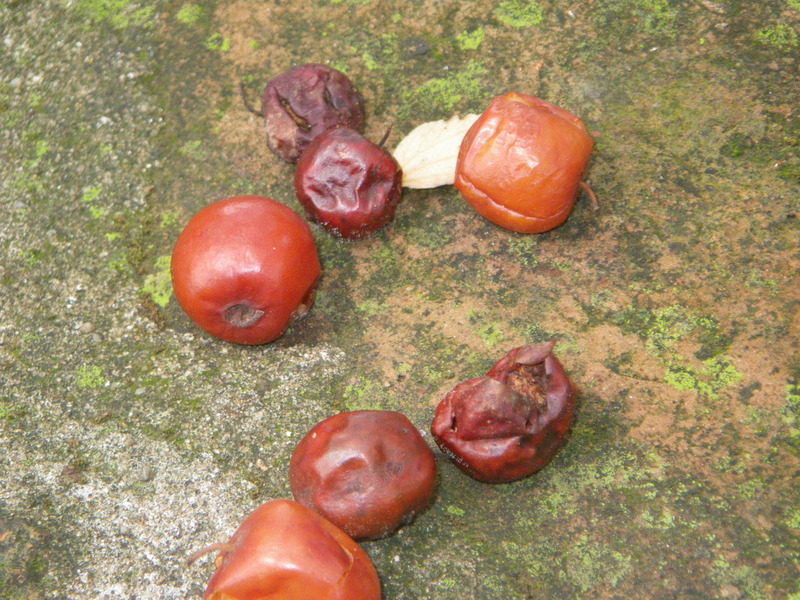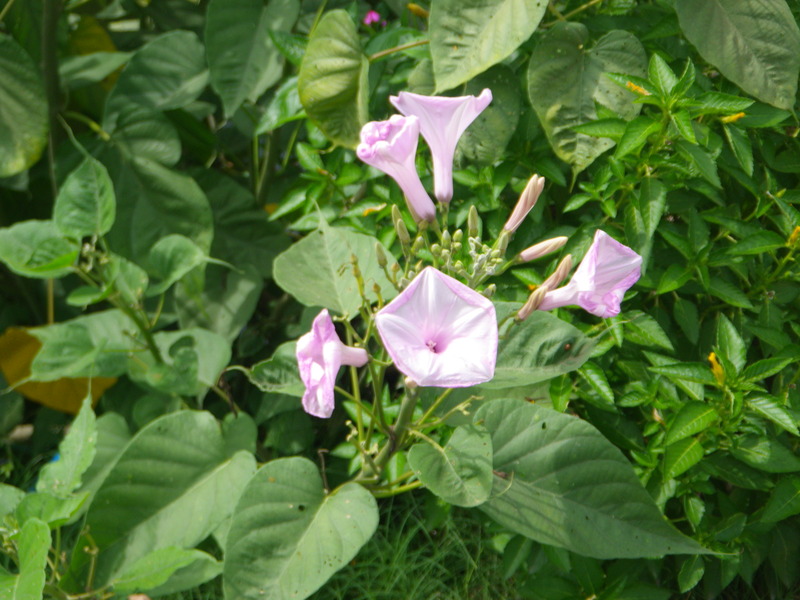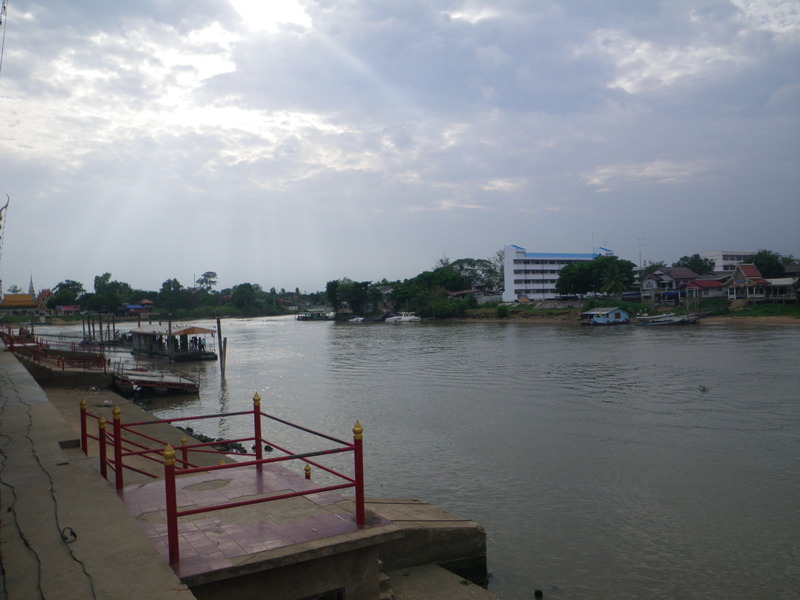
Ayuthaya was the capital of the Thai kingdom from 1351 until its destruction by a Burmese army 1767.
There are many ways to romanize the Thai script, and Ayuthaya (อยุธยา, if you can read that, or พระนครศรีอยุธยา for completeness) can also be found as "Ayutthaya" or "Ayudhya".
Before it was destroyed, it was a major international city, with settlements by Portuguese, Dutch, and Japanese as well as English, French, and about a million Thai.
The central part of Ayuthaya is on an island at the junction of two rivers, which together form the Chao Praya river which runs through Bangkok. This is the place where the Chao Praya begins.

The picture above is taken from a modern Thai temple which also has a Chinese component.

Nearby is a very old temple, Wat Yai Chai Monghkon, for which this is the Chedi (Stupa).
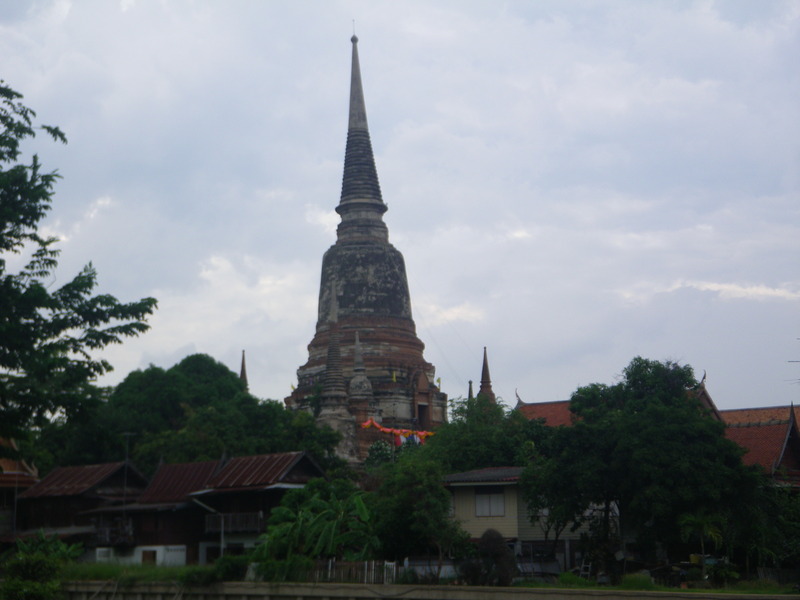
And in case you are confused about Thai temple architecture, I found a very helpful sign.
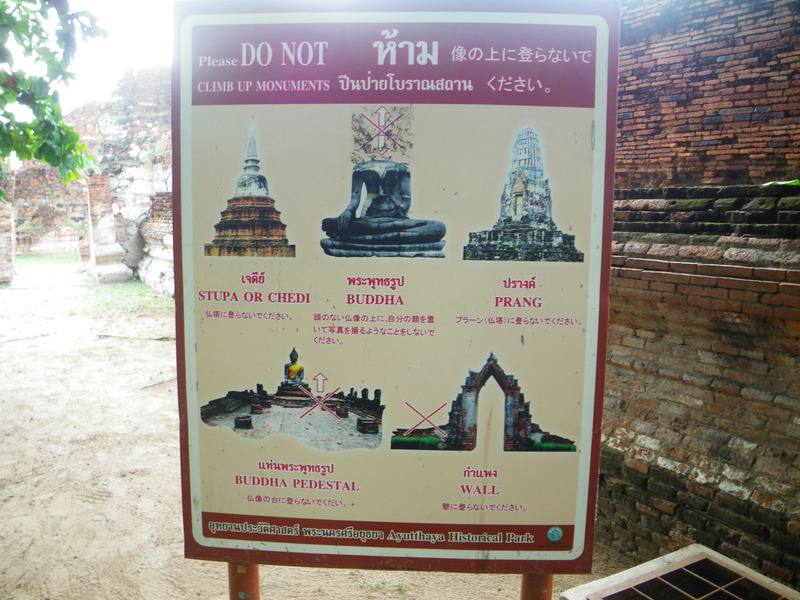
The most famous temple in the central part of Ayuthaya (on the island) may be Wat Phra Si Samphet.
These Chedi (altogether, 3 of them) are in Wat Phra Si Sanphet. I tried to figure out if they survived the Burmese invasion or are restored, but I am not sure. In any case, they are quite impressive.

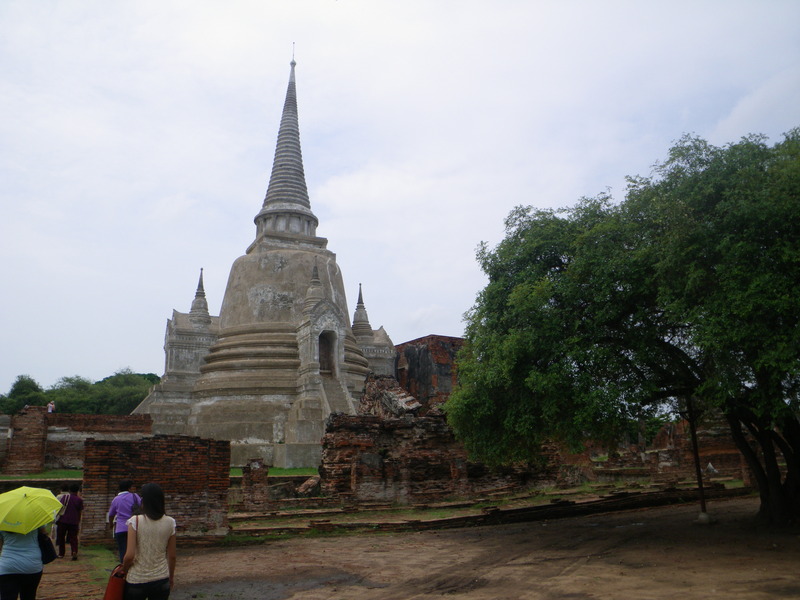

A lot of other structures clearly did not survive the invasion -- very frequently I was reminded of the roman forum and of Pompei.

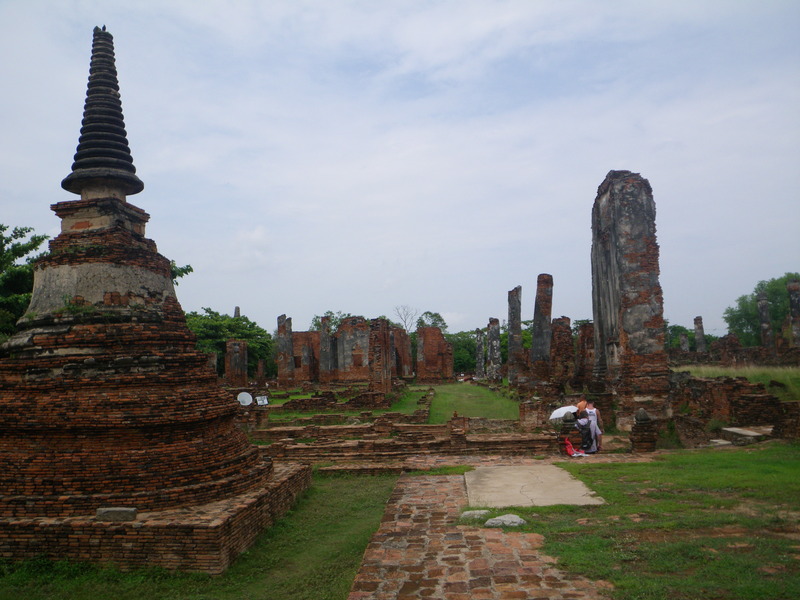
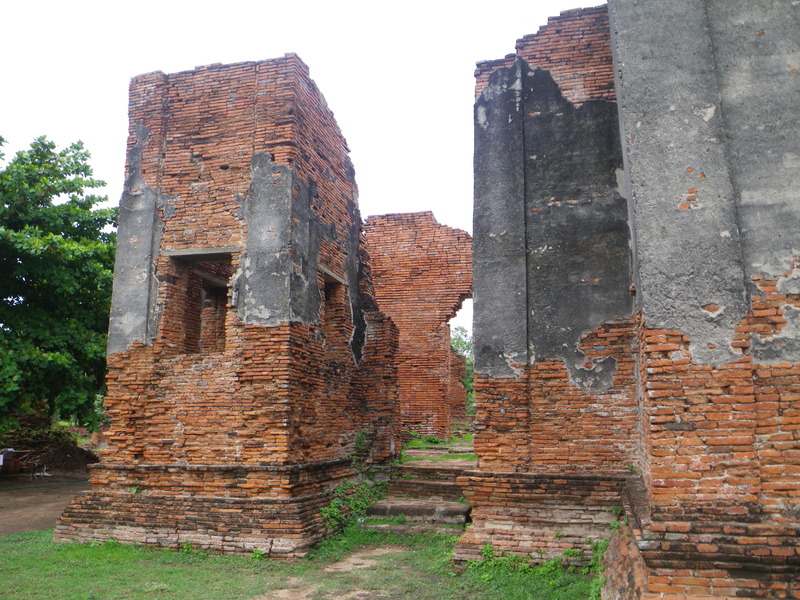
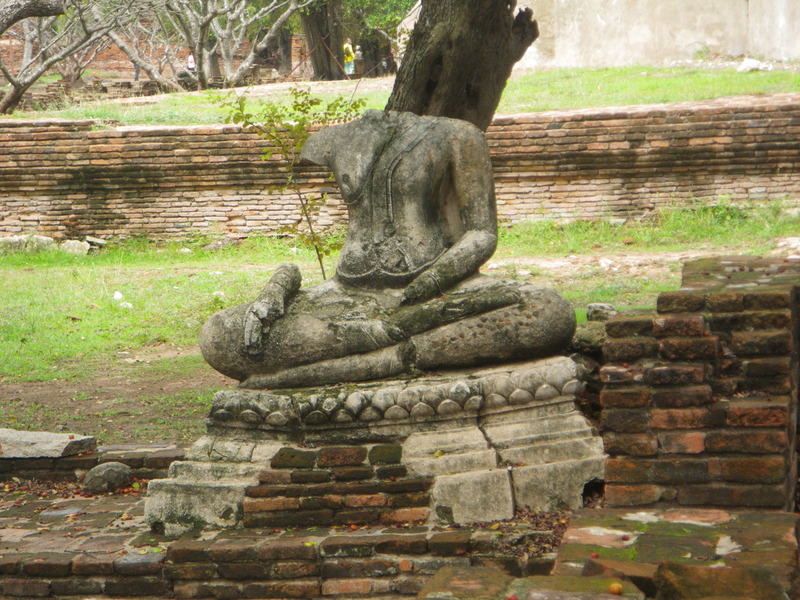
Another temple, Wat Lokayasutha, has very little left, other than a (perhaps reconstructed) sleeping Buddha with a very serene expression.
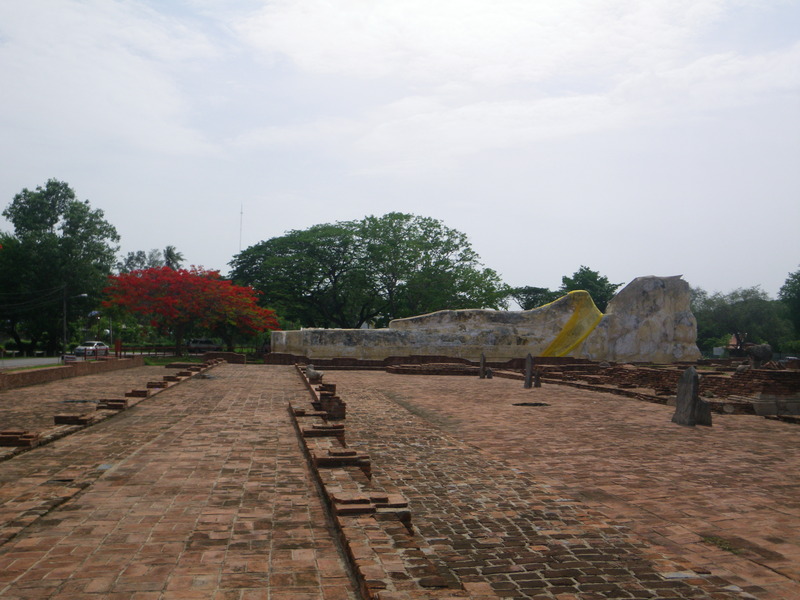


In the last picture, I am standing next to the Buddha's feet. The man in the blue shirt was busy removing the yellow covering from the Budda, a task made more challenging by the fact that he did not have a ladder. Instead, I saw him climb up and down the Buddha's toes...
Next I visited some houses recently built in traditional Thai style.

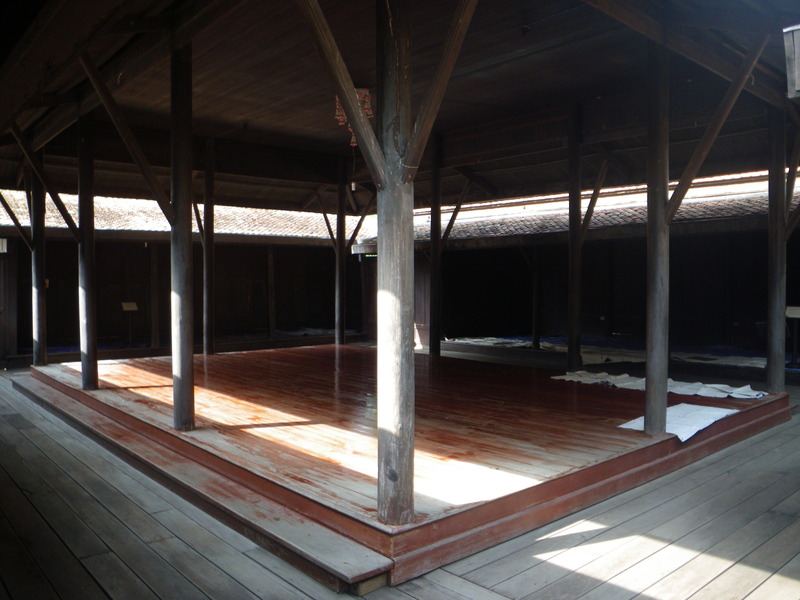
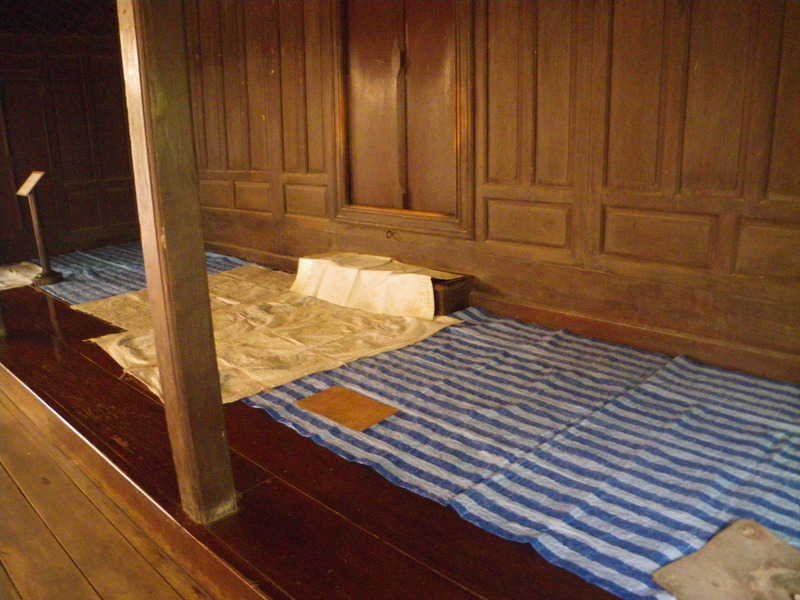

This is a rather touristy place. Can you spot the elephant?

The last major temple I visited is Wat Maha That. It has many beautiful structures.
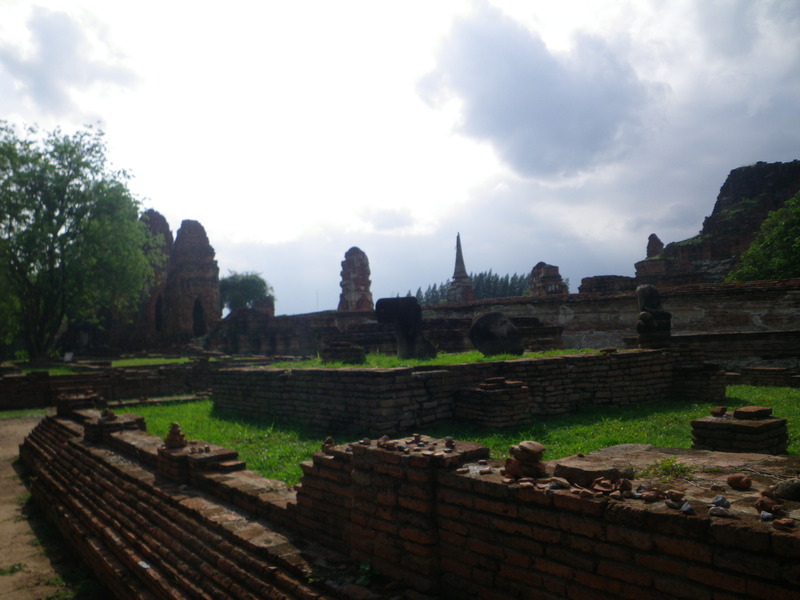
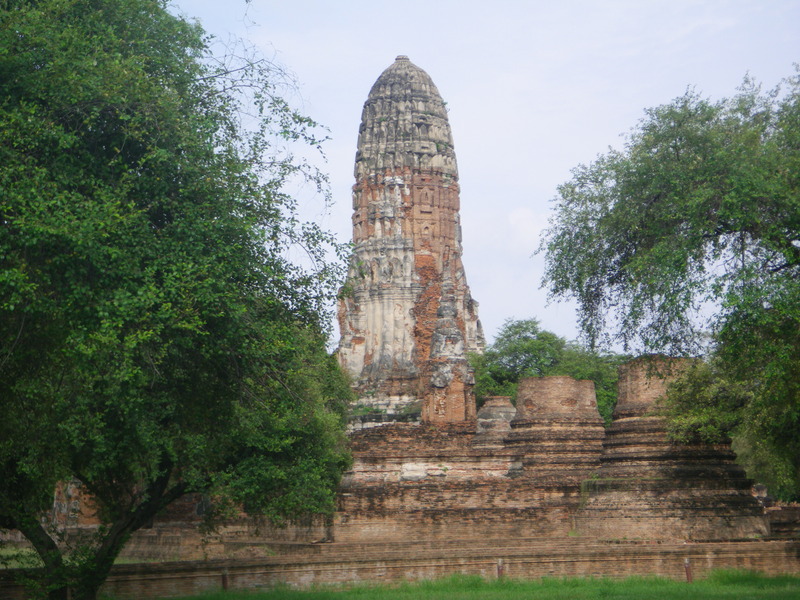

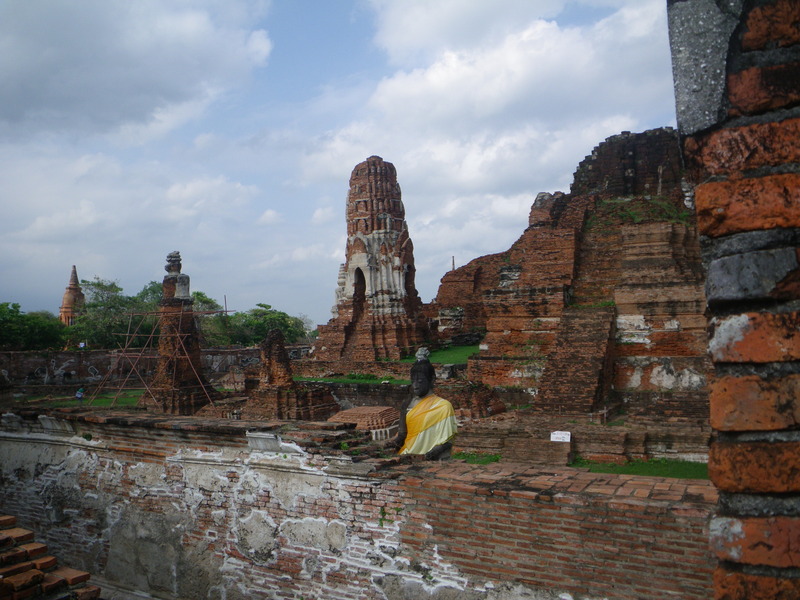
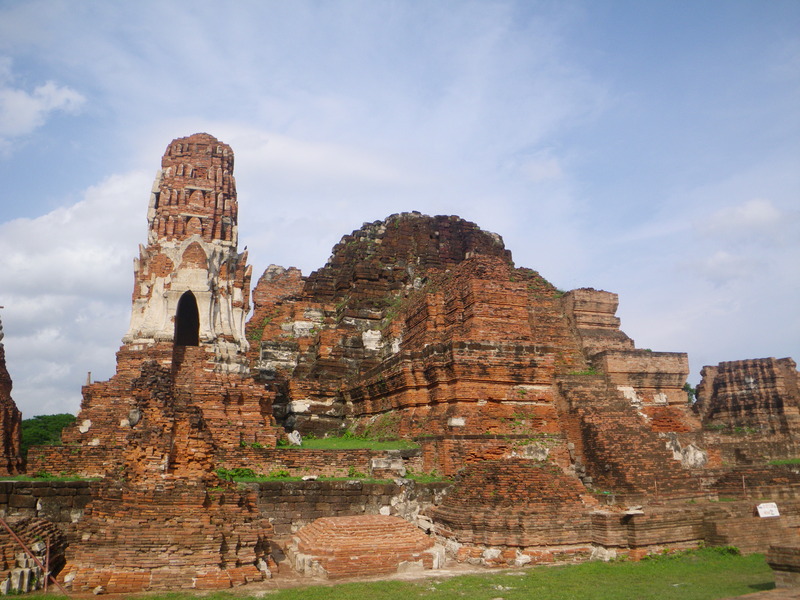
But the reason this temple is most famous is because, many years ago, somebody (it is not known who) started to carry a head of the Buddha, and then put it down and left it there. Eventually, a Banyan's roots grew around the head.


Throughout Ayuthaya I noticed some of the structures leaning over at strange angles. It is my guess that the ground is soft here, as it is in Pisa.


This makes sense, considering Ayuthaya was built in a low place near a river (as is true for Pisa), and the ground is probably old mud deposited by river floods over the centuries.
One person I talked to, showed me the level of the 2011 flood. After that, it was easy to see on whitewashed buildings. It was about 1m to 1.5m above the level of most of the ground.
The nice thing about Ayuthaya is, it is quite green. I found some interesting fruits (I believe them to be Monkey apples, but I am not sure if I have correctly identified the species) and flowers.
